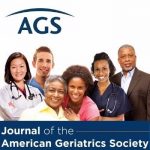 Journal of the American Geriatrics Society Research Summary
Journal of the American Geriatrics Society Research Summary
An international team of experts compared practices that research has shown to help older adults prevent falls. Their new study, published in the Journal of the American Geriatrics Society, suggests that:
- Exercise is the most effective method for decreasing the rate of falls in adults aged 65 and older who live independently. It is especially effective in adults aged 75 and older.
- Exercise and a basic falls risk assessment by your healthcare provider can reduce your risk of breaking bones in a fall. In a falls assessment, your healthcare provider asks you about whether you’ve fallen, the details of the fall, and whether your home environment contributed to the fall. They also evaluate how well you walk and move around, along with your balance and other walking-related issues.
These strategies can also help prevent falls:
- Using assistive technology and devices. These can include canes, walkers, and devices that can call for help at the touch of a button.
- Making homes safer by:
- removing clutter, throw rugs, and other falling hazards
- improving lighting
- installing grab bars
- making other home improvements.
Falls: A Serious Health Problem for Older Adults
Falling, or accidentally and unexpectedly landing on the ground, usually happens in familiar environments while you are doing your normal, daily activities. You may fall when something pushes you, you trip, you lose consciousness (from a seizure, stroke, or other health problem), or you are experiencing the symptoms of a new illness.
Falls have serious consequences. One out of five falls does causes a serious injury, such as a broken bone or a head injury.[1] In older adults, they are the number one cause of hospital admissions for injuries. The older you are, the more likely falls are to threaten your ability to live at home and increase your risk of an early death.
Falls are very common among older adults, especially those who have multiple chronic conditions. An older person falls every second of the day, and one out of three older adults living at home falls every year.
Why the Researchers Studied Fall Prevention Strategies
Falls are such a big problem for older adults that many researchers have studied ways of preventing them. In order to get the big picture of what works best to prevent falls, the researchers of this study did what is called a systematic review and meta-analysis. This means that the researchers looked at the results of multiple studies all at once.
Most of the studies they looked at evaluated programs that used more than one strategy at the same time to prevent falls. Researchers say this study is the first to look at how effective the individual falls prevention strategies are when they are examined separately, instead of together. Understanding and comparing the effects of each strategy can make it easier for healthcare professionals to offer older adults personalized help.
Earlier studies have also failed to include people over the age of 75 and older adults with multiple chronic conditions. Because people in these groups have an especially high risk of falling, it is important to learn more about which falls prevention methods are most effective for them.
What the Researchers Learned
The researchers examined 192 studies that included nearly 100,000 older adults who live independently. Of those studies, 128 included adults between the ages of 75 and 84 years old. Eleven of the studies included people 85 or older. The studies compared the effects of 63 fall prevention strategies—some individual strategies and some combinations of strategies—to the effects of the care the participants usually received.
Researchers found that that exercise is the most effective individual strategy for decreasing the rate of falls and number of falls in adults aged 65 and older who live independently. It seems to be especially effective in adults aged 75 and older. Strategies that work in combination include exercise, falls risk assessments, the use of assistive devices, and making changes to your home that make it safer.
Study findings also suggest that older adults who exercise and have had falls risk assessments may be less likely to break bones if they fall.
Study Limitations
Over half the studies that the researchers looked at used methods that may have caused biased results.
What This Study Means for You
If you do only one thing to prevent falls and fall-related broken bones, make it exercise.
This summary is from “Interventions for preventing falls and fall-related fractures in community-dwelling older adults: a systematic review and network meta-analysis.” It appears online ahead of print in the Journal of the American Geriatrics Society. The study authors are Lauren Dautzenberg, MD, MSc; Shanthi Beglinger, MD, MBiolSci; Sofia Tsokanid, MSc; Stella Zevgitid, PhD; Renee CMA Raijmanna, MD, MSc; Nicolas Rodondib, MD, PhD; Rob JPM Scholtene, MD, PhD; Anne WS Rutjesc, PhD; Marcello Di Nisiog, MD, PhD; Marielle Emmelot-Vonka, MD, PhD; Andrea C Tricco, PhD; Sharon E Straush, MD, MSc; Sonia Thomash, MSc; Lisa Bretagneb, MD, MSc; Wilma Knola, MD, PhD; Dimitris Mavridis, PhD; and Huiberdina L Koeka, MD, PhD.
[1] https://www.cdc.gov/homeandrecreationalsafety/falls/adultfalls.html
